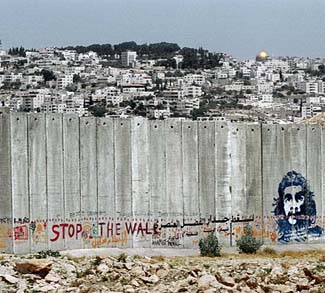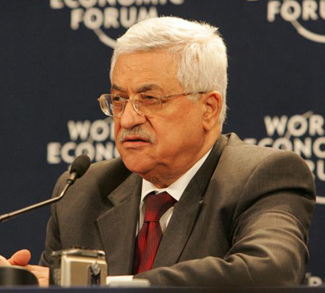Despite the enormous pressure, the perceptions of “fairness,” and the predictions of conflict resolution that Western leaders assure would be the outcome of a Palestinian state, there is a remarkable dearth of dialogue as to what a Palestinian state might in fact look like. By “look,” this means to consider beyond the borders – over which there is much debate – and focus on the character of the state. Even here we don’t mean the intent or orientation of a prospective Palestinian state – though that too is a matter of hot debate.
Rather, the character of the prospective state is more a question of what sovereignty and “statefulness” would actually entail for Palestinians and Israelis. The concept of the state endures well into the 21st century. Ethno-nationalism, it seems, remains a prominent force to sustain aspirations for the traditional territorial state. Even so, the neo-liberalism so popular is the late 20th century , albeit in retreat, is not mistaken in the assertion that transnational forces of trade, capital flow, environment, gender, and even religion – ISIS – can combine to challenge the foundations of the traditional state.
The one repeated mantra that is almost as entrenched as the idea of a Palestinian state alongside Israel is that it must be a “viable” state. Almost as popular as this undefined notion of viability is the concession that said state would be “demilitarized.” The meaning of “viability” and the assurance of “demilitarization” are not at all clear.
One supposes that “viability” is Western code for “territorial continuity” which, in turn, is code for the June 1967 borders with “minor modifications.” There would be little new in an article on Palestinian statehood if we focused on the moral or even the practical implications of the 1967 borders.
Suffice it to say, no Israeli government of whatever stripe or composition will accept a loss of “sovereign” territorial control at the Jordanian border and, of course, in Jerusalem.
One supposes that “viability” is Western code for “territorial continuity” which, in turn, is code for the June 1967 borders with “minor modifications.”
Again, this isn’t a comment on justice or fairness or what ought to be, just an observation on Israeli red lines. In short, it is hard to imagine how this would happen given Israel’s resolve and its capabilities.
The failure to imagine such a scenario and yet to still conceive of a “viable” Palestinian state acceptable to both Israelis and those Palestinians we call moderate by virtue of their suppression of territorial absolutism implies that sovereignty might be a more fluid concept than we had imagined.
This is not a back door argument for “autonomy,” which would not satisfy Palestinian aspirations. Still, one is entitled to ask: when does statefulness degenerate to autonomy? And what accelerates Camp David and Oslo beyond autonomy to statefulness?
The obvious answer is “sovereignty.” Again, however, we see that this assertion raises as many questions as it answers. Consider that it is Western Europe that is determined to recognize a Palestinian state, which is a bit ironic given that the Europeans have themselves diluted their own sovereignty in the European Union.
Some would argue this is sophistry, not at all an “apples to apples” comparison. True enough, if the ethnic divide between Israelis and Palestinians is the sole consideration. Yet, not so true if we think about what happens on Day Two of a Palestinian state. What currency will the Palestinians use? Jordanian Dinars, Israeli Shekels or a Palestinian unit? What of the Palestinian labor force? Will statehood change the fact that a good number of Palestinians work in Israel, or else in Israeli enterprises on the West Bank? What of the more obvious questions of Palestinian air travel ? Tel Aviv or Amman? A Palestinian sea port? If that seems contentious after the Gaza wars with Hamas, what of Israeli settlements in the West Bank? Territorial “contiguity” between the West Bank and Gaza? Dare we even ask about Jerusalem?
Once the rhetorical pronouncements, flag-waving, and national anthems abate, Jerusalem might offer a model for “neo–sovereignty.” Palestinians may bristle at Israeli military and territorial “sovereignty” in Jerusalem now. Nonetheless, even right-wing Israeli governments remain reluctant to “demonstrate” sovereignty on the Temple Mount and at the Haram al-Sharif.
Israel has never flown its flag on the Mount, nor have Israeli governments ever authorized Jewish prayer there. The most “aggressive” Israeli move amounted to Ariel Sharon’s walk on the Temple Mount, which some say triggered the Second Intifada.
So, it is unclear that Israel wields political or administrative “sovereignty” in Jerusalem, though it is at the same time undeniable that Israel has military control. Is sovereignty and statehood no more than that the Jews have the guns?
If more than that, the best chance for a viable Palestinian state is where such a state and its leadership recognize a fluid and interdependent concept of statefulness and sovereignty.
Again, if saner and pragmatic minds prevail with the recognition that Israeli military control over the Jordanian border and Greater Jerusalem is in fact essential to stabilize a prospective demilitarized Palestinian state, then the real significance of sovereignty on Day Two becomes the ethnic composition of each state.
Whatever one’s political bias and allegiance, the fact is that 20% of Israel “proper” within the Green Line is Palestinian Arab. Perhaps not “full citizens,” these Palestinian Israelis nonetheless enjoy property rights, legal recourse, and the right to vote – like any other Israeli.
Might ethnic Israelis inside a “sovereign” Palestine hope to enjoy the same status? Not a chance, at least not on Day One with wounds still raw. Indeed, this might be the clearest manifestation point of Palestinian sovereignty: the withdrawal of the Israel Defence Forces from whatever territory in the West Bank that is negotiated as Palestinian. At that moment, prudence suggests Israeli citizens would be best to withdraw as well – either within the Green Line or to areas within the West Bank that might be ceded to Israel.
How this might come about is as unclear as the impasse itself is clear, yet the fact remains that most Israeli settlers are pragmatic and not religious/ideological; economic and housing incentives for repatriation inside Israel proper might entice all but the most zealous.
Even then, the Palestinian state that takes shape strikes us as less than “sovereign” from what our image of hard “billiard balls” in International Relations engenders. Palestine – if it suppresses irredentist pressures to attempt to push the Jews into the sea – will in fact need to accept the dilution of conventional sovereignty in order to hope to prosper and remain viable.
This is the paradox. A sovereign Palestine in the conventional sense is a candidate for failure. It will need to move from the symbols and trappings of statehood with deft precision and determination to de facto confederation with Israel and Jordan. If one thinks about it in an abstract sense – devoid of the rivers of blood in Jerusalem at present – there is no reason why a Palestinian parliament could not assemble in Jerusalem under a “diluted” sovereignty where ceremonial armed guards patrol a delicate but functional modus vivendi with Israeli soldiers.
Naïve? Perhaps….. No more so, however, than to think the status quo is sustainable, or that Greater Israel will prevail as Pax Israelica, or that speeches and declarations will subdue Israel and form Palestine without compromised negotiations.
The opinions, beliefs, and viewpoints expressed by the authors are theirs alone and don’t reflect any official position of Geopoliticalmonitor.com.




